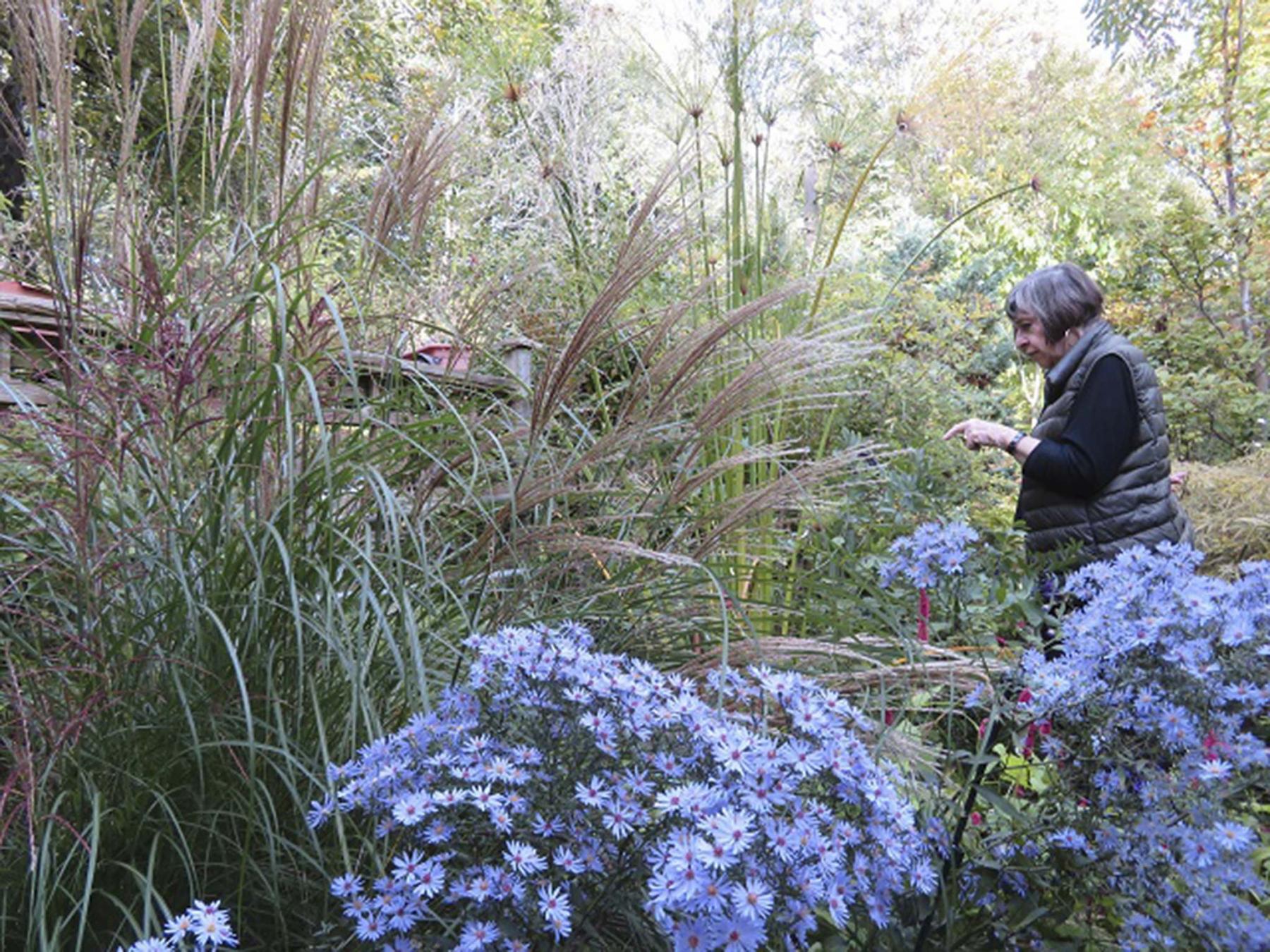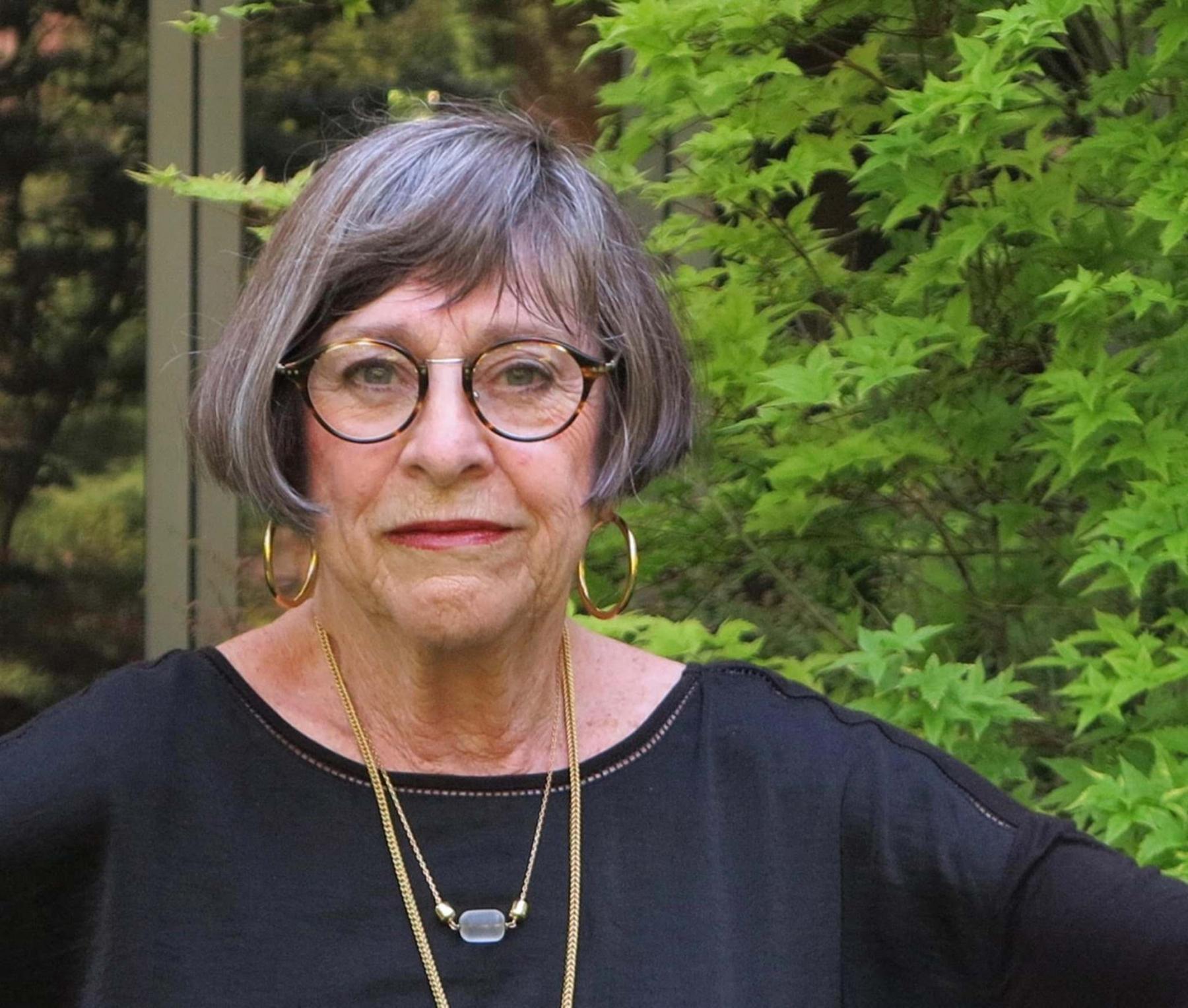
Paul Lewis
Today Marjorie Harris is a plant and garden consultant in Toronto.
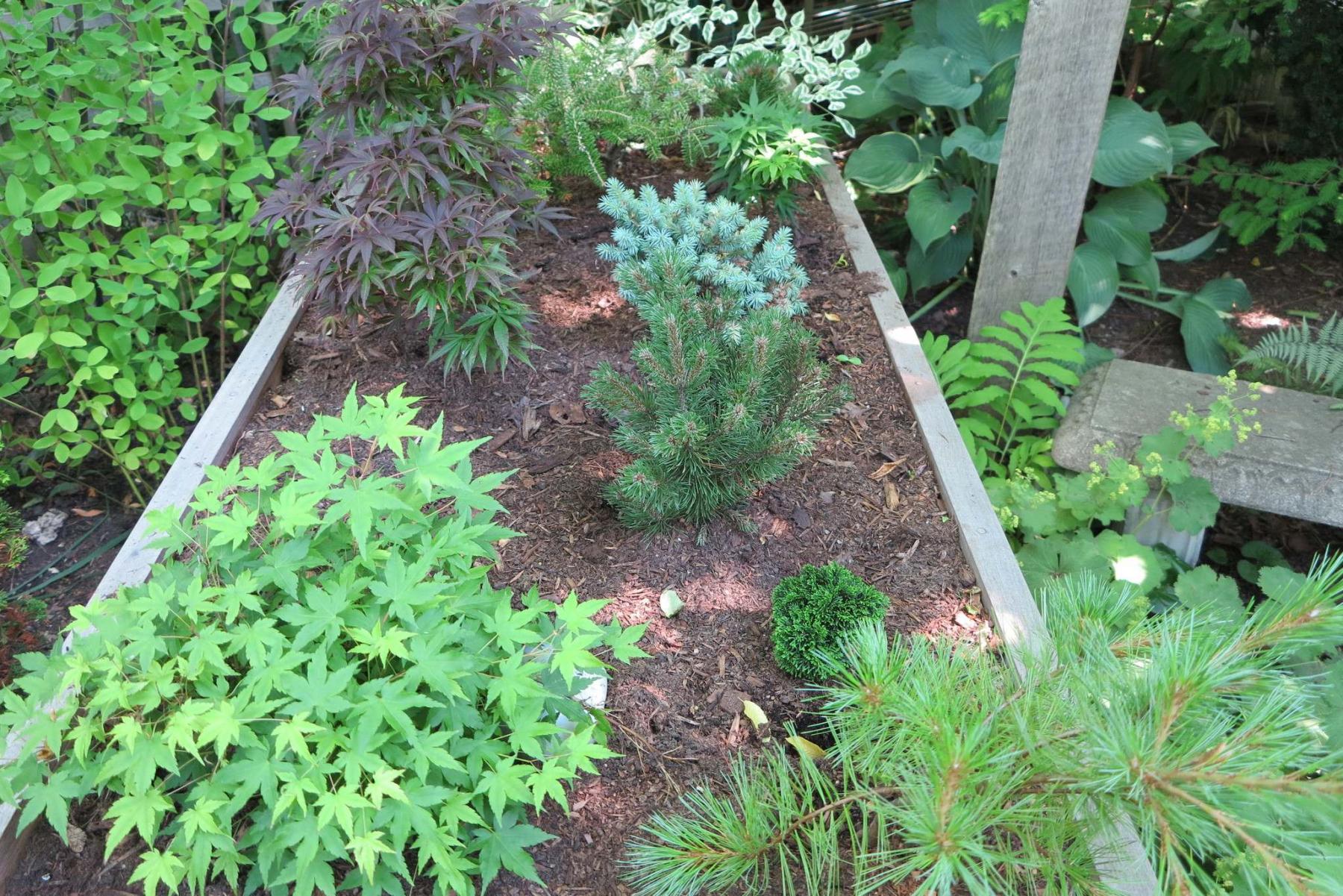
Marjorie Harris
A satisfying mix of miniature Japanese maples and evergreens.
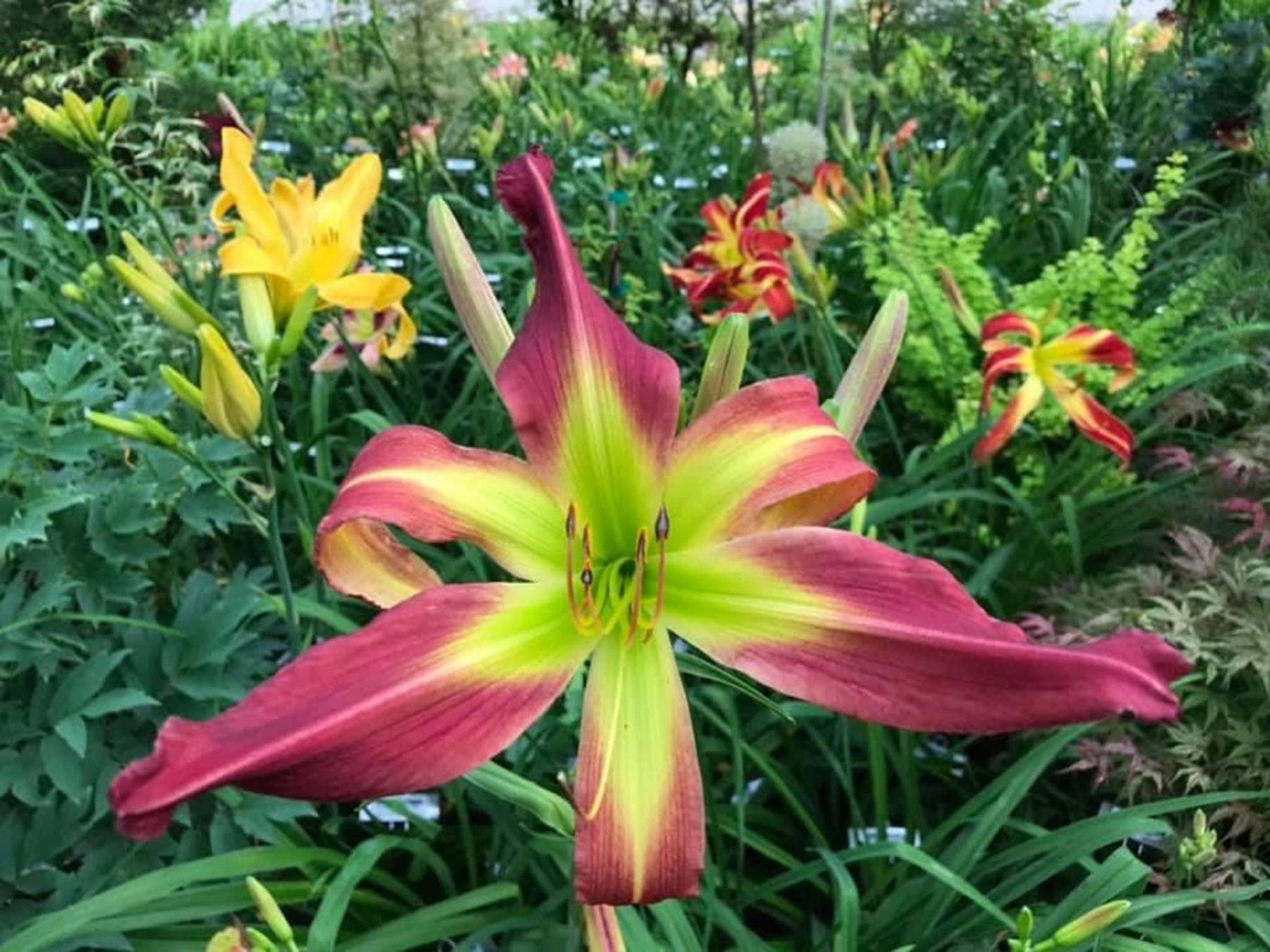
Paul Gellatly
Hemerocallis Marjorie Harris daylily by Paul Gellatly, hybridizer.
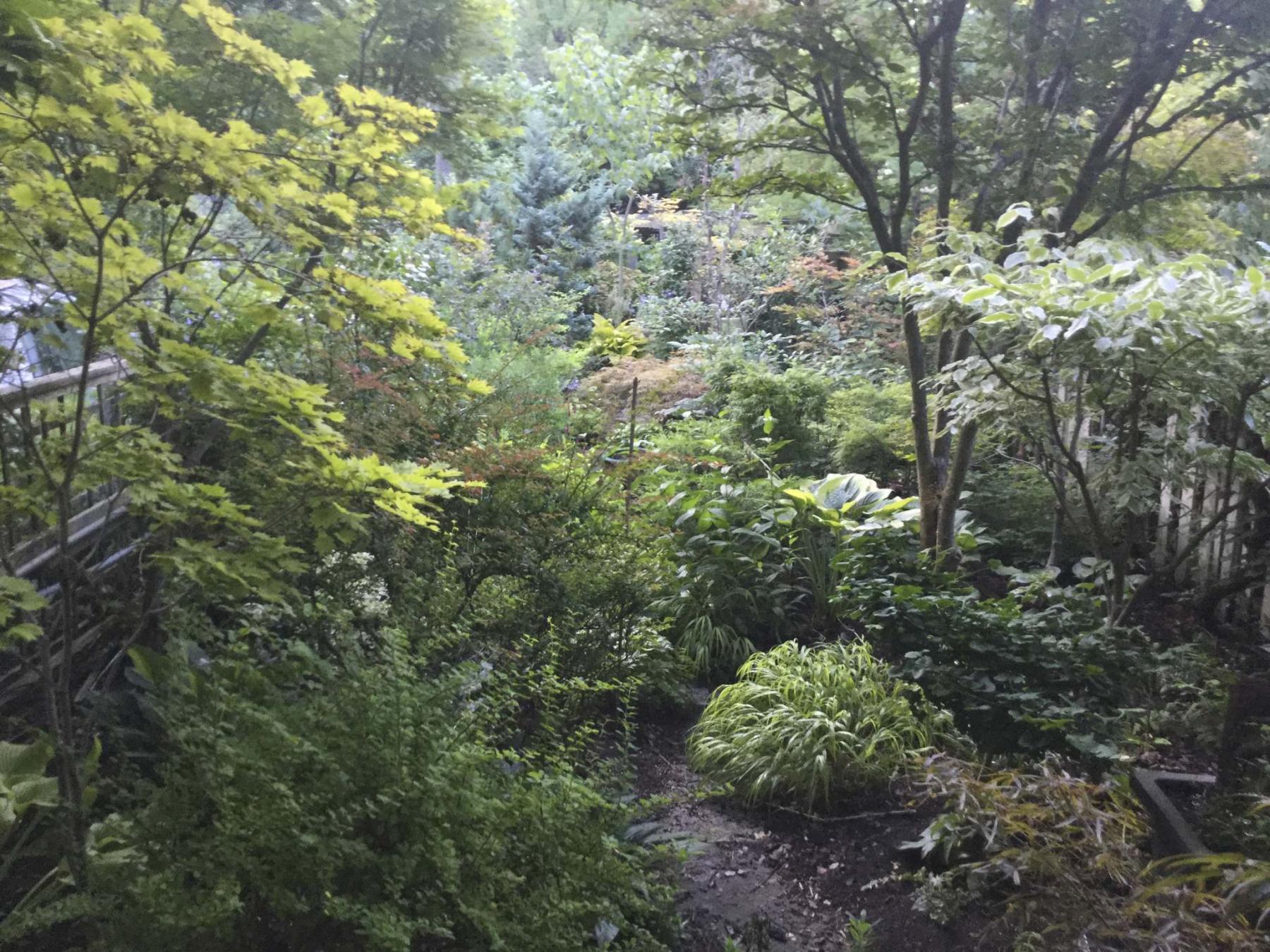
Marjorie Harris
The harmonious view of Marjorie Harris's garden from her dining room window.
When normal isn’t normal anymore and uncertainty fuels anxiety, the one constant in a gardener’s life is the garden. Neither snow, nor rain, nor heat, nor gloom of pandemic keeps Marjorie Harris from spending time in her Toronto garden — especially now.
Many of us know Harris from the time when she was editor-in-chief of the gardening magazine, Gardening Life, as well as the gardening columnist for The Globe and Mail. A prolific author, Harris has written more than a dozen gardening books. In spring, 2008, Harris delivered a keynote presentation to a sold- out Winnipeg audience and many of us, including myself, met her in person for the first time.
When the 2008 financial crisis (at the time, the worst economic disaster since the Great Depression) put an abrupt end to Gardening Life magazine, Harris wrote in a blog post titled, R.I.P. Gardening Life, that at least the garden was one thing no one could close down. Today Harris has a thriving business as a plant and garden consultant in Toronto. She’s also involved with a project called Visionary Gardeners, an original television series currently in the works.
The importance of home and garden to Harris cannot be overstated. On February 1, Harris and her husband, Jack Batten, well-known author and journalist, left their house — the same house where they have lived since 1967 — and flew from Toronto to Paris for what was supposed to be the trip of a lifetime. Fluent not only in the French language but also in the Parisian way of life, they planned their longest visit – a glorious and immersive three month stay on the 11th floor of an apartment right at the edge of the 11th Arrondissement next to le Marais district in a city that has become like a second home.
At first everything was perfect. "We had all of Paris in our view: 180 degrees of monuments and glory with the Eiffel Tower lighting up every evening like a shimmy dancer," says Harris. Cafes, galleries and museums were bustling with people. With spring flowers coming into bloom, gardeners were busy at work on public boulevards. Harris watched, intrigued, as a handsome artichoke was planted in an area of the famed Boulevard Voltaire and made a mental note to perhaps add the same structural element to her garden at home.
Everything changed seemingly in an instant. Harris remembers the exact moment at an outdoor café enjoying a glass of wine when she struck up a casual conversation with two other travellers and the creeping sense of fear she experienced at learning the couple had just returned from a visit to Italy where there was a serious COVID-19 outbreak.
There was a restive mood in Paris, says Harris. She began seeing people carrying bags of toilet paper and bottled water. Suddenly, with only a few hours notice, everything was shuttered as Paris went into lockdown.
Coronavirus was scooping all the oxygen out of the air and friends were fleeing the city or canceling their plans to visit, says Harris. She and her husband were desperate to return home to Canada. Getting there, though, was the problem. It was nearly impossible to get through to Air Canada or Expedia to reschedule their flight home. Matters were further complicated when their mobile server, Orange, went down. They were bumped from their flight three times. It was oppressive, says Harris, and she could feel her life changing by the day. The prospect of stay-at-home orders and imposed separation from their children and grandchildren were relieved only by thoughts of being back safe at home and in the garden.
It took until March 21 before they finally arrived home, exhausted from a harrowing journey where every sniffle by fellow passengers magnified their sense of danger.
The hollowness that Harris felt during the last couple of weeks in Paris followed her into the time spent in isolation at home. "Everybody is feeling this lack of contact. Thank God there is the garden," she says. Harris, who designs gardens for her many clients and enjoys nipping and tucking and changing up her own garden, put the isolation to good use. She has a direct view of her garden from her dining room table which she calls her design central.
"Plants make me think and my plants are going to be pushing me in some direction or another." Harris says she is going to rethink her attitude towards plants. She has always used native plants in her garden and the gardens she designs. She skilfully combines plants that are native to her area with exotic species such as Acer palmatum Japanese maple and other non-native plants. Some plants may be coming out. "From now on I will be looking at things with a very critical eye," she says. She plans to put more emphasis on native plants in her garden and is going to switch out some existing shrubs for more berry producing plants. "The whole business of doing your garden as a hedgerow that is for all the birds, insects, and wildlife in the urban scene — making an ecosystem that is really powerful for the environment — feels more important than ever," says Harris.
Harris’s garden sits at the edge of the Carolinian forest. Her garden is long and narrow – 5.7 metres wide and 41 metres deep. Plants with good form are essential to building the framework of the garden. Plants must relate to one another, says Harris who is sought after for the personalized and customized designs she creates for her clients. Her signature style is to create harmonious combinations or layers of plants with seasonal interest so that the garden is beautiful year-round. A really satisfying combination in her front garden consists of Sciadopitys verticillata Japanese umbrella pine, Daphne Eternal Fragrance and the wondrous Helleborus Champions, the first of her hellebores to bloom in spring.
In a raised bed in her backyard she has combined miniature evergreens such as Pinus mugo Mitsch Mini with two different species of Japanese maple as well as Cornus alternifolia Argentea, which has a branching pattern like that of Pagoda dogwood. Harris says she finds it unbelievably satisfying to sit nearby and admire these great plants. "I’m also adding a few more evergreens to my garden because I’m mad for them."
Another satisfying combination is Aster Little Carlow, a Michaelmas daisy with lavender-blue petals and golden-yellow centres that she has combined with Persicaria amplexicaulis Golden Arrow Mountain Fleece. She loves Golden Japanese forest grass (Hakonechloa macra Aureola) and Cimicifuga Hillside Black Beauty. Both are perfect perennials with exceptional colour and texture.
Winnipegger Marilyn Dudek visited Harris’s garden last year and said it was magical. "Peaceful and serene, it incorporates structure, secret sitting areas, meandering paths and vistas that are hidden unless you stop, turn, and look," says Dudek who was impressed by the rich tapestry of plants.
It’s only fitting that Paul Gellatly, the new director of horticulture for the Toronto Botanical Garden and an experienced hybridizer of daylilies named one of his hybrids Marjorie Harris. The stunning bloom colour works with the aesthetic of her whole garden very well, says Harris.
colleenizacharias@gmail.com

